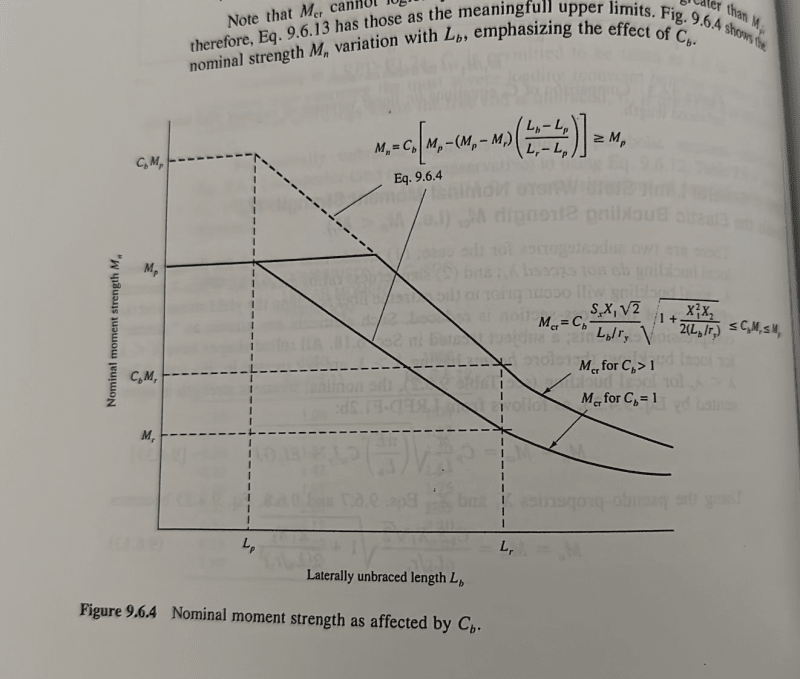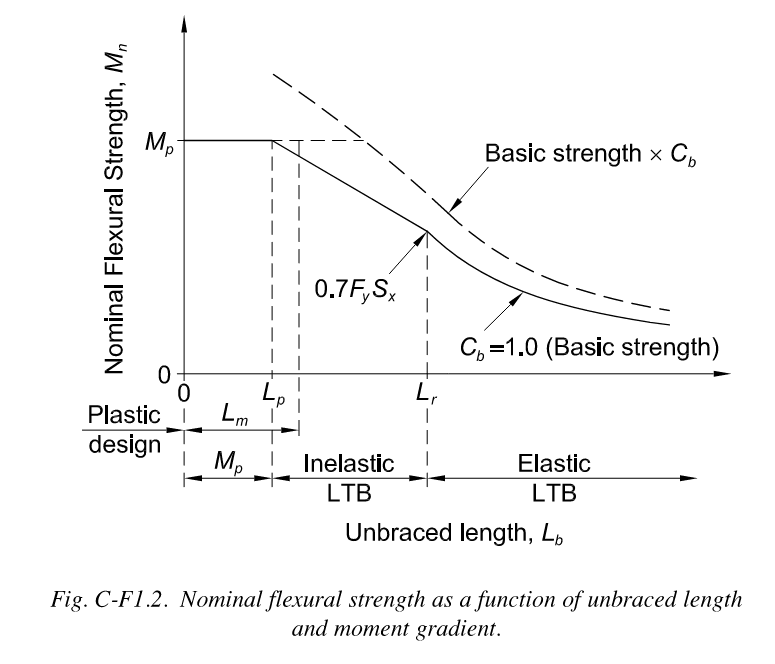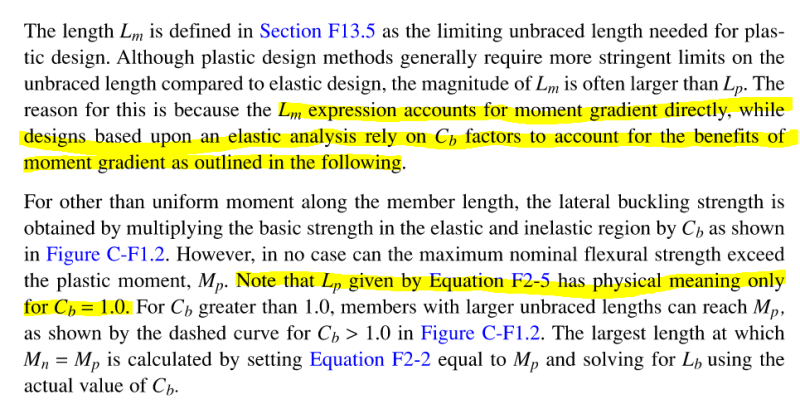Italo01
Structural
- Sep 4, 2021
- 169
Hello,
I always had a problem with the derivation of the length Lr in AISC spec. (Which is exactly equal to the Brazilian code). I never understood why the factor Cb is not considered in the calculation of Lr, since Lr is defined as the length at which Mcr= Mr.
I Friend of mine, which is a member of the Brazilian code revision comission, talked recently about this question and he proposed that the factor Cb be included in the calculation of Lr. I'd like to know your opinions about this matter.

The image above from Salmon shows that, as defined today, Lr is the length for which Mcr = Cb*Mr, which doesn't make sense, since Cb shouldn't affect Mr.
The chart below shows the proposed curves.

Thanks for your opinions.
I always had a problem with the derivation of the length Lr in AISC spec. (Which is exactly equal to the Brazilian code). I never understood why the factor Cb is not considered in the calculation of Lr, since Lr is defined as the length at which Mcr= Mr.
I Friend of mine, which is a member of the Brazilian code revision comission, talked recently about this question and he proposed that the factor Cb be included in the calculation of Lr. I'd like to know your opinions about this matter.

The image above from Salmon shows that, as defined today, Lr is the length for which Mcr = Cb*Mr, which doesn't make sense, since Cb shouldn't affect Mr.
The chart below shows the proposed curves.

Thanks for your opinions.


